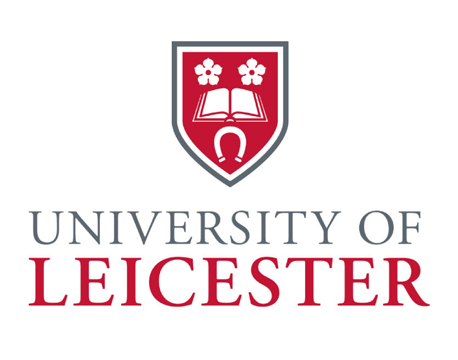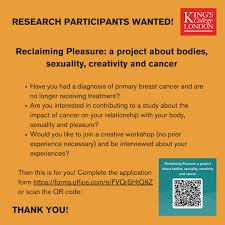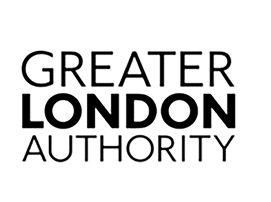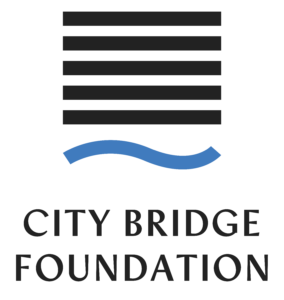- Have you had a diagnosis of primary breast cancer and no longer have any…

Mr 26 Call for papers
CALL FOR PAPERS
Museological Review, Issue 26 – Museums and Healing (Summer 2022)
Submission deadline for abstracts/proposals: Monday 22nd November 2021, 23.00 GMT
Museological Review (MR) is a peer-reviewed journal, published annually by the PhD cohort of the School of Museum Studies at the University of Leicester, UK. It is a forum for the exchange of museological ideas and the development of academic skills.
Museological Review’s theme for its 26th issue is “Museums and Healing”. In the context of the diverse crises and changes being faced globally, this issue will discuss and reflect on healing as both a problematic and fruitful concept that could help mobilise museums going forward.
Healing is a notion that is meaningful across many disciplines, from health and social sciences to arts and philosophy. It applies to individuals, families, communities and societies, and operates physically, mentally, emotionally and environmentally. While museums have made efforts towards healing (wellbeing programming, peaceful and sociable spaces, and work to address the traumas of conflict and inequality), museum practices have also been considered harmful (perpetuating oppressive narratives and structures, housing looted objects, and straining internal organisational wellbeing).
How can we think about healing in the museological framework? How do these inquiries impact museum practices? What values underlie our assumptions around what healing is, and means, in relation to museum practices and ideas? Museological Review Issue 26 will consider how the museum sector is responding to worldwide events and discourses, navigating new ways to engage with audiences and negotiate relevance. Papers addressing the following themes and questions are encouraged:
- Restitution and repatriation
- Decolonisation and anti-racism
- Intersectional approaches
- Cultural contestation
- Social conflict and togetherness
- Identity and representation
- Truth, censorship and narrative
- Climate change
- Communities and care
- Social, personal and generational trauma and recovery
- Health and wellbeing programming
- Staff wellbeing and organisational health
We also welcome other suggestions and creative proposals on museums and healing.
Museological Review is accepting submissions in the following 6 formats:
-Academic Articles (maximum 5,000 words)
–Interviews (maximum 3,000 words) with practitioners or researchers working in the area of museums and healing, or working to heal museums themselves.
–Exhibition or Book Reviews (maximum 1,000 words) including physical/virtual exhibition or book reviews.
Requirements:
- Title of your proposed submission
- Full name of the author
- 350-word proposal
- Interviewee consent form (for interviews only)
- 3 keywords which best represent your submission
- Full postal address, professional qualifications, position(s) held
- Social media handles, if you would like to be tagged in our posts (Twitter, Facebook, Instagram)
–Visual Submissions comprising a single image which depicts the theme of “empathy” and a caption (max 150 words).
–Short Contributions (Maximum 300 words text) with authors’ own views on the question: “Is the museum an agent of healing or harm in society?”
Requirements:
- Full name of the author
- Completed short contribution / visual submission with 150-word caption
- Full postal address, professional qualifications, position(s) held
- Social media handles, if you would like to be tagged in our posts (Twitter, Facebook, Instagram)
–Audio/Video Listings Submissions with a link to a video/podcast relating to the topic of museums and healing or the subtopics above, including two/three sentences describing the media and how it connects to the theme. These submissions could include sharing a research or practice project, interview, or tour, for example.
Requirements:
- Title of your proposed submission
- Full name of the author
- Two/three sentences summarising the video/podcast and how it relates to the journal’s theme
- Full postal address, professional qualifications, position(s) held
- Social media handles, if you would like to be tagged in our posts (Twitter, Facebook, Instagram)
- Note that submissions should have a scholarly or professional focus, e.g. explore museological theory and/or practice. It is the responsibility of the creator to ensure copyright regulations are adhered to.
The submission deadline for all formats is Monday 22nd November 2021, 23.00 GMT. Submissions are open to graduate students (MA and PhD), current PhD candidates, early-career researchers and museum practitioners.
Submissions and enquiries should be emailed to: museologicalreview@leicester.ac.uk.
Results
The authors of selected abstracts/proposals/visual and short submissions will be contacted in late December 2021 to early January 2022. The deadline for the submission of the full academic articles/interviews/reviews is mid-February 2022. The editorial process (peer-review and editing) of accepted submissions will take place from February to April 2022. Final publication decisions will be made after the peer review and editing process. The issue will be available from the Museological Review webpage from Summer 2022.
Notes for contributors: https://le.ac.uk/museum-studies/about/journals/museological-review/notes-contributors
Format
- A digital copy of the typescript is required in Microsoft Word format
- All submissions must be in English. British English spelling is preferred
- Times New Roman font size 12-A4 format (21 cm x 29.7 cm)
- Double line spacing
- Normal margins (2.54 cm on all sides)
- Note: It is not possible for the editorial team to undertake or arrange for independent proof reading and the obligation for thorough checking is the responsibility of the authors. The publication cannot be assured until final revisions are accepted.
Visual Submissions Format
The image can be manipulated and edited. A title and a short caption of max 150 words should enhance the message, but the image must be able to communicate on its own merit. Visual submissions must be original work. Any identifiable person depicted must consent to their image being published. Please submit your image as a .jpeg or .tif file to a resolution of 600 dpi and 3508×2480 pixels. Please submit your caption in a Microsoft Word document.
Audiovisual Listing Format
For audiovisual listings, we require a working link to the media and a two/three sentence summary of how it addresses the theme of the journal (which would accompany the link in the listing). Videos or podcasts should be hosted on a reputable third-party site, e.g. YouTube, Vimeo, Anchor/Spotify or Soundcloud. Accompanying transcripts/captions are encouraged.
Illustrations/Figures/Tables Written papers can be accompanied by black and white or colour photographs, line drawings, maps, tables or any other visual element. All illustrations and figures should be numbered consecutively in the order in which they are referred to in the text. Please note that they must be fully captioned and supplied separate from the manuscript document, NOT included in a Word document, as .jpeg, .tif or .bmp files (NOT eps).
Referencing/Bibliography References must be presented using the Harvard system (author and date given in the text, e.g., Connerton, 1989; Cook, 1991: 533).
The bibliography should be at the end of the paper, arranged alphabetically by author, then chronologically if there is more than one work by the same author. Use the inverted format as follows: Connerton, P. (1989). How Societies Remember. Cambridge, Cambridge University Press. Cook, B.F. (1991). ‘The archaeologist and the Art Market: Policies and Practice.’ Antiquity 65: 533.
Copyright
It is the author’s responsibility to obtain copyright approval for non-original materials included in submissions.
If the author wishes to include any material in which they do not hold the copyright, written permission from the copyright owner must be obtained before submission. This applies to direct reproduction as well as ‘derivative reproduction’, where a new table or figure has been created which derives substantially from a copyrighted source.
The author must provide appropriate acknowledgement of the permission granted to them for reuse by the copyright holder in each caption or figure. The author is solely responsible for any fees which the copyright holder may charge for reuse.
Acknowledgement of Funding Sources
Source of funding for the research reported in the submission should be acknowledged at its end. All authors should disclose in their submission any financial or other substantive conflicts of interest that might be construed to influence the results or interpretation of the submission.
Submissions are free of charge.








This Post Has 0 Comments